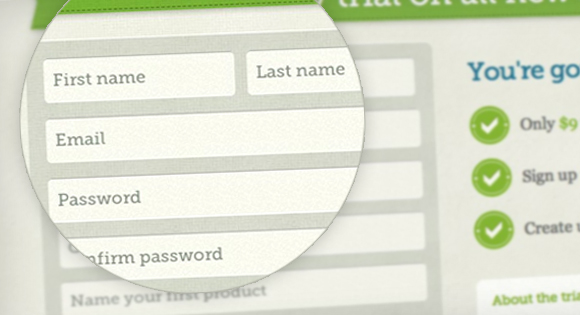
What does web design mean? What are the steps involved in web development? This article will cover the various elements of web development, and give a brief explanation for each. This article will also explore the different aspects of database management, network security, and more. We will also examine the many areas of web design, such as back-end coding and front-end development. This article also demonstrates the importance in hiring qualified professionals to create websites for business.
Website design
Web development is a term that describes a process by which web developers create websites. Web design can be divided into several categories, including User Interface (UI), User Experience (SEO), Visual Design (Visual Design), and Search Engine Optimization (SEO). Web development must be user-friendly, no matter if the website is designed for business purposes or personal use. The visual hierarchy principle allows users to quickly navigate through a website and find relevant information.
Web designers must research the design and structure before designing a website. They must understand how a web site functions, and they must be able to change different components to attract users or serve different purposes. Web developers must also be able analyze how users interact with websites, and find the easiest way to accomplish a specific feature. Designers must have the ability to design graphics and logos as well as use a variety of software tools in order to create beautiful websites.

Front-end programming
Front-end web developers are responsible in web development for bringing visual designs alive and ensuring that users use the site efficiently. These professionals have access to a wide range of tools, including Photoshop, Illustrator and Balsmiq Mockups. These tools allow them to validate a user interface before they begin coding. To reuse web elements and blueprints, they also use content management systems. Front-end developers also work with static images, designs, and other elements to ensure that websites work well on a wide variety of screens and are easy to navigate.
The HTML and CSS languages are the two main languages used by front-end designers in terms of functionality. HTML is the foundation of a website, while CSS gives more specific instructions to web browsers about how to display content. With CSS, you can customize text, fonts, and colors. JavaScript is a programming languages that can run in both the browser as well as the server. The benefits of front-end coding are endless.
Database management
Database management is not a new concept in web development. It has been around for a long time, ever since people used Microsoft access to store data offline. Nowadays databases can be used online and offline to store data. It is therefore essential that web developers understand the basics of database management. This article will cover the various types of databases available and their use. We'll also be discussing the different types and management systems of databases.
Traditionally, the database was used to store data in relational tables, which can be accessed through SQL. However, as information has become more complex, the database management systems have evolved to keep up with the times. In the 1970s, relational database technology was developed. These databases store data in rows and columns. Data can also be stored in document databases. They are stored in JSON documents. Developers will find it much easier to use these databases, as they share the same document-model format and application code.

Network security
Manual testing used to be the only method to ensure web application security. This strategy worked well, but the number of web applications and websites is increasing rapidly, and attackers are gaining more sophistication. Web application security management is no simple task. In fact, all potential vulnerabilities can be found in the network infrastructure that an organisation uses to access or maintain its web application. These vulnerabilities can be eliminated.
There are many ways you can secure your network. But firewalls are most often used. Firewalls prevent unfriendly traffic. Next-generation firewalls, however, target application-layer malware and malware. Protecting your network from intrusion can be done with an intrusion detection system. To avoid intrusion, always configure your firewalls to block malicious traffic and prevent unauthorised access. A multi-factor authentication system is recommended for websites that are intended for public use. It will help reduce the likelihood of malware attacks.
FAQ
How much do web developers make?
A website is a project you can work on for your own money. You'll likely make $60-$80 an hr. But if you want to charge a lot more, you should consider becoming an independent contractor. The hourly rate could be anywhere from $150 to $200
What HTML & CSS can I use to create my website?
Yes, you can! You will need basic knowledge of web design and programming languages like HTML (Hyper Text Markup Language) and CSS (Cascading Style Sheets). These two languages make it possible to create websites accessible by all who have an internet connection.
Do I need a portfolio to get hired as a web designer?
Yes. It is important to have a portfolio when applying for web design or development jobs. Your portfolio should include examples of your skills.
A portfolio typically includes samples from your past projects. These can be anything that shows off your skill set. Your portfolio should include everything from mockups, wireframes, logos, brochures, websites, and even apps.
Statistics
- The average website user will read about 20% of the text on any given page, so it's crucial to entice them with an appropriate vibe. (websitebuilderexpert.com)
- Is your web design optimized for mobile? Over 50% of internet users browse websites using a mobile device. (wix.com)
- At this point, it's important to note that just because a web trend is current, it doesn't mean it's necessarily right for you.48% of people cite design as the most important factor of a website, (websitebuilderexpert.com)
- It enables you to sell your music directly on your website and keep 100% of the profits. (wix.com)
- It's estimated that chatbots could reduce this by 30%. Gone are the days when chatbots were mere gimmicks – now, they're becoming ever more essential to customer-facing services. (websitebuilderexpert.com)
External Links
How To
How to use WordPress in Web Design
WordPress is a software application that you can use to build websites or blogs. Easy installation, powerful theme options, and plug-ins are some of the main features. This website builder allows you to customize your site according to your preferences. You can choose from hundreds of themes or plugins to make your site unique. If you'd like, you can also add your own domain. These tools will allow you to effortlessly manage your site's appearance as well as its functionality.
WordPress makes it easy to create beautiful sites even if your HTML skills are not required. It doesn't matter if you don’t know much about coding. You can create a beautiful website in no time. We will walk you through basic steps to set up WordPress on your computer. We'll explain everything so you can follow along at home.
WordPress.com is currently the most used CMS (Content Management System). It has approximately 25 million worldwide users and counting. You have two options for WordPress: you can either purchase a license for $29 per monthly or download the source code to host it free of charge.
WordPress is often chosen for its blogging platform because of many factors. One of the best things about WordPress is its simplicity. Anyone who knows HTML can create beautiful websites. It also offers flexibility. WordPress.org offers many themes for free. This means that you can completely customize the look and feel without spending a dime. It's also very customizable. Premium add-ons are available from many developers that allow you automatically to update posts when someone comments, or integrate social networking sharing into your site.